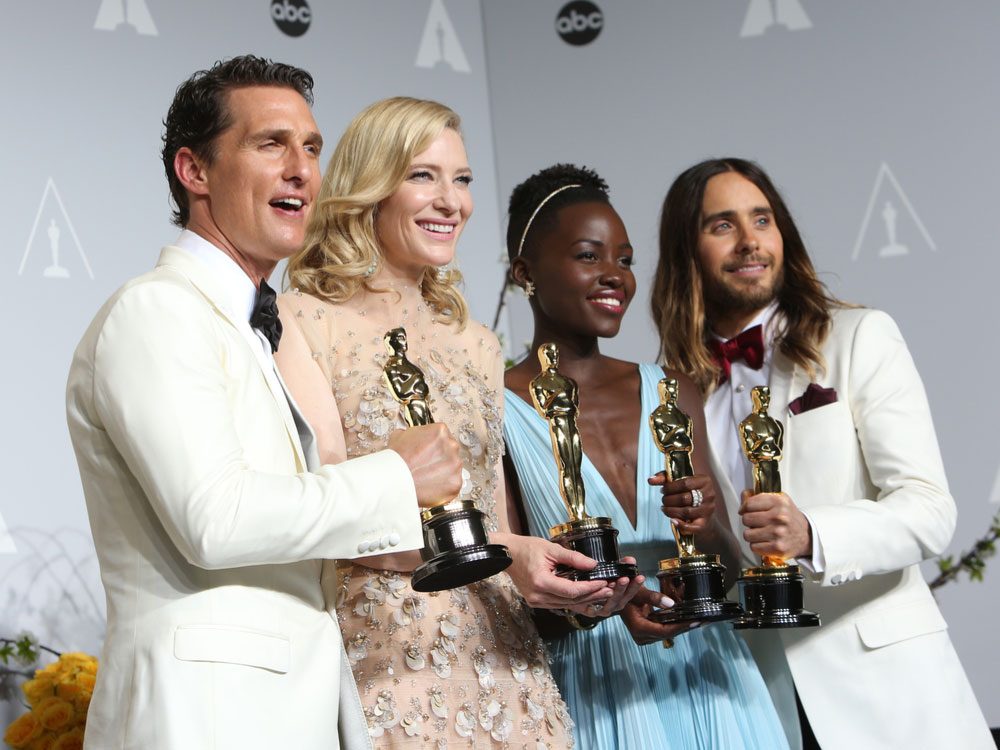
The Most Inspiring Quotes from the Oscars
1. “I’m just a girl from a trailer park who had a dream. I never thought this would ever happen.” —Hilary Swank, Best Actress, Million Dollar Baby (Here are 17 things you didn’t know about the Oscars!)
2. “No matter how far out your dreams are, it’s possible. Fair play to those who dare to dream and don’t give up.” —Marketa Irglova, Best Original Song, Once
3. “God bless that potential that we all have for making anything possible if we think we deserve it. I deserve this.” —Shirley MacLaine, Best Actress, Terms of Endearment
4. “I am king of the world!” —James Cameron, Best Director, Titanic (Take a look at the most memorable snubs in Oscar history.)
5. “It has been a long journey to this moment.” —Sidney Poitier, Best Actor, The Defiant Ones
6. “I call upon you to draw from the depths of your being to prove that we are a human race. To prove that our love outweighs our need to hate. That our compassion is more compelling than our need to blame. That our sensitivity to those in need is stronger than our greed.” —Elizabeth Taylor, Jean Hersholt Humanitarian Award
7. “This is such an honour. But the thing that counts the most with me is the friendships, and the love, and the sheer joy we have shared making movies together.”—Meryl Streep, Best Actress, The Iron Lady
8. “When you are in the ocean you must swim.”—Pedro Almodovar, Best Foreign Film, All About My Mother
9. “I want to thank anyone who spends part of their day creating. I don’t care if it’s a book, a film, a painting, a dance, a piece of theatre, a piece of music. Anybody who spends part of their day sharing their experience with us. I think the world would be unlivable without art.”—Steven Soderbergh, Best Director, Traffic
10. “…never once in my life did my parents ever say, ‘What you’re doing is a waste of time.’ Never. And I grew up, I had teachers, I had colleagues, I had people that I worked with all through my life who always told me what you’re doing is not a waste of time… I know there are kids out there that don’t have that support system, so if you’re out there and you’re listening, listen to me: If you want to be creative, get out there and do it; it’s not a waste of time. Do it. OK?” —Michael Giacchino, Best Original Music Score, Up
11. “You can’t hold grudges. It’s hard but you can’t hold grudges. And it doesn’t matter how you get knocked down in life because that’s going to happen. All that matters is you gotta get up.” —Ben Affleck, Best Picture, Argo
12. “When I’m being true to myself, I can avail myself to extraordinary things such as this. You have to allow for the impossible to be possible.” —Lupita Nyong’o, Best Supporting Actress, 12 Years a Slave
13. “You just do the best you can.” —Clint Eastwood, Best Director, Million Dollar Baby
14. “Stay weird. Stay different. And then when it’s your turn and you are standing on this stage, please pass the same message to the next person who comes along. Thank you so much.” —Graham Moore, Best Adapted Screenplay, The Imitation Game
15. “I won and I get to scream and jump a little. But I got to go back to work tomorrow.” —Benicio del Toro, Best Supporting Actor, Traffic
16. “Can I have my champagne now?” —Cate Blanchett, Best Actress in a Supporting Role, The Aviator
17. “You know, there’s one place that all the people with the greatest potential are gathered. One place. And that’s the graveyard. People ask me all the time, ‘What kind of stories do you want to tell, Viola?’ And I say, exhume those bodies. Exhume those stories. The stories of the people who dreamed big and never saw those dreams to fruition. People who fell in love and lost. I became an artist, and thank god I did, because we are the only profession that celebrates what it means to live a life.” —Viola Davis, Best Supporting Actress, Fences
18. “There’s a few things, about three things to my count that I need each day. One I need something to look up to, another something to look forward to, and another is someone to chase.” —Matthew McConaughey, Best Actor, Dallas Buyers Club
19. “And I am standing here because the woman I share my life with has taught me and demonstrates for me every day just what love is.” —Tom Hanks, Best Actor, Forrest Gump
20. “This moment is so much bigger than me. This moment is for Dorothy Dandridge, Lena Horne, Diahann Carroll. It’s for the women that stand beside me: Jada Pinkett, Angela Bassett, Vivica Fox. And it’s for every nameless, faceless woman of colour that now has a chance because this door tonight has been opened.” —Halle Berry, Best Actress, Monster’s Ball
Check out Every Oscar Best Picture Winner Ranked—From Worst to Best!

First love is not generational. It doesn’t happen only to teens giddily dreaming of romance or young adults seeking a coveted, grown-up commitment. It happens to everyone from elementary school children with no concept of “forever” to assisted living residents with dementia. It happened to me at the age of 10.
Napa Street School in 1964 Northridge, California, was about as innocent and carefree a place as one could hope for given the assassination of President John F. Kennedy the year before and the periodic air raid drills linked to the Cold War. Students walked without fear between home and campus, practiced dances for May Day performances, and played kickball or on monkey bars during recess. I wore dresses and saddle shoes, and stole my first kiss from a boy in the second grade.
In fourth grade, I met Thomas. He had a healthy crop of black hair, thick eyelashes, and a smile that made me look away and blush. I never thought about asking him whether he “liked me, liked me,” but one spring day during class the girl who sat next to me passed a note from Thomas with that very question. What a surprise that was. It was magical. I turned and sneaked a smile in his direction. My little heart would never be the same. (These hilarious first kiss stories will make you glad you’re no longer a teenager.)
Notes were the essence of our young flirtation until our teacher, Mr. Mace, intercepted one. Silhouetted against the Southern California sunlight, he stood next to his desk by the windows and asked if we wanted it to be read aloud. Of course, we didn’t and Mr. Mace’s strategy worked. The notes stopped. Instead, on the playground one day, Thomas unexpectedly walked up to me, put a ring in my hand, and walked away. The little bauble was from a bubblegum machine or a Cracker Jack box, but it may as well have been the Hope Diamond. I squealed and showed it to my girlfriends. Minutes later, Thomas came back and took the ring. He twisted the cheap metal into something unrecognizable and put it back in my hand.
That day after school I tucked the misshapen treasure into my jewelry box and cried. My father, who was home recovering from a broken leg, hobbled into my room and asked what was wrong.
“Thomas gave me a ring and then he broke it,” I sobbed.
I don’t recall what my father said, but I remember him sitting on the bed next to me with his arm around my shoulder. At the age of 10, your father’s comfort is all you really need. I didn’t dwell on the incident or try to analyze what happened the way someone older might. I didn’t even try to win Thomas back. There were Scout badges to earn, spelling tests to ace, Barbie dolls to dress, and slumber parties to spawn girlish mischief.
Anyway, eventually, I understood.
About 18 months after the ring incident, in December of 1965, I heard that Thomas was moving away. I was too mature now for clandestine notes passed beneath desks. I looked up his address in the telephone book and sent him a real letter in an envelope with a stamp. I told him that he was “nice” and that I was sorry he was moving.
As it turned out, the rumour I heard was false. Thomas wasn’t moving, but the letter sparked a correspondence that led to a happy revelation. In one of his replies, also a real letter that I have on my desk today, Thomas apologized for his actions in the fourth grade and explained that he just didn’t like everyone knowing about his romances. He said he still loved me and hoped I loved him, too.
Nothing really came of the letters, and I don’t remember interacting much with Thomas the rest of the school year. However, after our sixth-grade class advanced and everyone was spending the summer preparing for the exciting transition to junior high, Thomas once again made overtures. The last time I heard from him was by telephone.
“Would it be OK if I rode my bike over to your house tomorrow and visited for a while?” he asked.
“Yes. That would be fun,” I said, being careful not to sound quite as thrilled as I felt.
Thomas didn’t come the next day. He didn’t call again. He didn’t write. Today I would have telephoned to find out what changed his mind, but in those days girls generally didn’t call boys. I remember being a little afraid of what he might say and hoping he would call again someday but, just like the ring incident, I didn’t dwell on it. The summer was in full swing, the pool in our backyard beckoned daily, and my family was preparing for a vacation to Oregon that would end with the impulsive purchase of a house near Mt. Hood and a permanent move north.
More than half a century later, I’m happily married with children and grandchildren and am retired from a long career in public service. I grow roses in the desert, write enchanting stories that have been percolating in my head for years, and when I need a break I watch home renovation shows on a state-of-the-art, big-screen TV in the comfortable great room of a pretty nice four-bedroom home.
But even with all the blessings that surround me, I still think about Thomas. Once I even used a variation of his last name for a character in a book. And I still wonder about that summer day so long ago. Why didn’t he show up? Why didn’t he call or write? Any attempts to find him and ask those long overdue questions have fallen flat despite the advent of the Internet, social media, and genealogy tools that can be used for more than family research. I may never know the answers, but until my last breath, I’m sure I’ll wish I knew what became of my first love, Thomas, who once gave me a ring on the playground at Napa Street School.
Read on to find out which gorgeous cities may be lucky in love.
Reader’s Digest editors asked the Reader’s Digest contributor network to tell us their stories of first-time love. The following piece was written in response to that prompt.
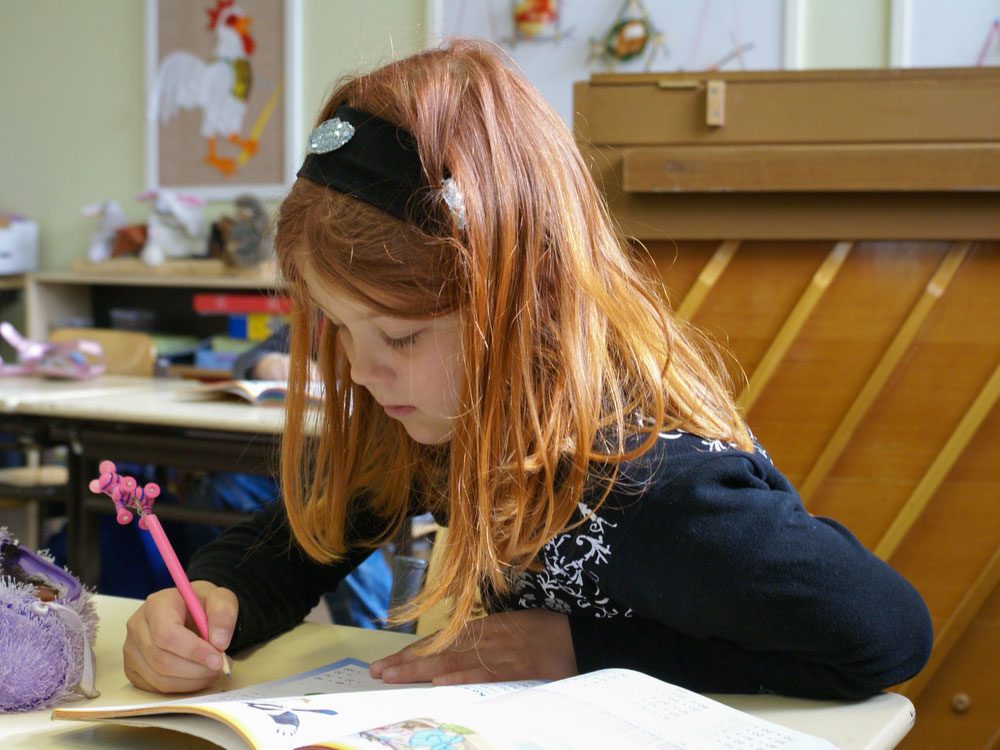
Kids Are Bullied Less in Finland—Here’s Why
One of the biggest challenges facing today’s students isn’t multiplication charts or book reports. Believe it or not, it’s bullying.
That’s right—research shows that Canada has the ninth highest rate of bullying in the 13-year-olds category on a scale of 35 countries.On top of that, bullying can also lead to depression, anxiety, and lots of school absences. Although it’s pretty clear that bullying poses one of the biggest obstacles to education, it’s rarely addressed in the classroom—until now.
Introducing: KiVa, the bullying prevention program that just launched in schools across Finland. The name is an abbreviation of the Finnish phrase “kiusaamista vastaan,” which translates to “against bullying.” Finnish educators created the program to teach students about the consequences of bullying, as well as what to do when they see it (especially without teachers or administrators around). (Here’s what parents need to know about cyberbullying.)
The program consists of in-class lessons and video games that simulate a variety of possible bullying situations. After practicing how they would respond, students can receive real-time feedback and advice from the game.
According to Johanna Alanen, KiVa’s International Project Manager, the program teaches essential anti-bullying responses because students “might witness a bullying incident and they have to decide what to do: whether to defend the victim or do something else. [They need to learn that] their choices have consequences and lead to new situations.” (Here’s how to stand up to bullies at home and at work.)
And so far, it’s worked! Educators report that the prevention program has reduced instances of bullying in Finland by up to one-half. Early data also shows that the program might help reduce depression and increase self-esteem for kids who have already been bullied.
Given the program’s remarkable success, other countries are considering implementing it, as well. Officials in Italy, the Netherlands, and the U.K. are testing it in their school systems, and the U.S. is in the process of evaluating it.
“Our findings are the first to show that the most tormented children—those facing bullying several times a week—can be helped by teaching bystanders to be more supportive,” Jaana Juvonen, a professor at UCLA, said in a press release.
Until then, we can celebrate anti-bullying moments like this teacher’s brilliant strategy to stop bullying.

Romantic Chemistry: 4 Factors That Create It
Although romantic chemistry might seem elusive, Kimberly Seltzer, a therapist, dating, and makeover expert at Elite Image Makeovers, says that magic spark can almost always be traced back to four factors: physical, emotional, intellectual, and spiritual attraction. Here’s a breakdown of each.
Physical attraction
“Most people can define which features they find attractive,” says Seltzer. “It’s often a list of x,y, and z.” But it’s not all cut and dry. “Attraction in the physical domain is the one you see the most shift in over time,” she says. That is, someone might initially find their date only moderately attractive, and then see that person’s attractiveness increase as they get to know them on a more intimate level. (This is the male body type women are most attracted to.)
Emotional attraction
“This is the way somebody makes you feel,” says Seltzer. “Do you feel loved, nurtured, cared for; is the other person putting his or her feelings out there; are you putting your feelings out there?” One indicator you and a potential partner might be lacking emotional attraction is if the person seems great in theory, but you don’t feel a spark. There are ways to overcome this, says Seltzer. “Many people don’t put themselves out there when they first meet someone,” she explains. “Instead, they talk in facts.” Skip the small talk about jobs and number of siblings and go deep. Ask about your date’s journey—their likes and dislikes; their plans for the future. Share similar things about yourself. “Allowing yourself to be vulnerable is key,” says Seltzer. (Try out one of these 37 conversation starters.)
Intellectual compatibility
Similar to physical attraction, many people have an idea of what they’re looking for in terms of intellect. For example, a person with a sense of humour that relies on sharp wit will feel more compatible with someone who can match their smarts. (Hone your wits with these three genius strategies.)
Spiritual compatibility
Of the four domains, spirituality is the most difficult to define. “Some people put religion into this category; for others it can be choices like veganism and ways of life,” says Seltzer. “On first impression, you don’t often get a handle on this domain. It develops over time.” (Here’s how your zodiac sign can predict your romantic compatibility.)
Discover these nine ways to meet and attract new people.

Kopi Luwak: The World’s Most Expensive Coffee
Many of us don’t think twice about forking over $5 to $6 on our daily cup of Joe. But if you want to spend top dollar on your a.m. pick-me-up, there’s something you might want to know.
The most expensive coffee in the world, called Kopi Luwak, sells for hundreds of dollars per pound. Unlike your average cup of Joe, however, this coffee is made from the poop of a raccoon-like mammal called the Asian palm civet. (Find out the one ingredient you need to start adding to your coffee.)
Yes, you read that right—you are essentially sipping on animal droppings. And believe it or not, it’s totally sanitary. After a civet eats and defecates the ripe coffee cherries, the partially digested beans are gathered, washed, and processed. The result? A cup of coffee with rather unusual (and rare!) taste. (Discover the pros and cons of coffee.)
But brewers, beware: Higher price doesn’t mean you’re getting a higher quality bean. According to coffee expert Rocky Rhodes of the International Coffee Consulting Group, the unique processing technique does make the coffee taste smoother. But it also reduces the delicious acids and flavours that make for a solid cuppa. (Here’s what might happen to your body if you stop drinking coffee.)
Keeping that in mind, you might be better off brewing your morning coffee at home. Your wallet—and your taste buds—will thank you.
Bad news, coffee drinkers! You’re probably a psychopath if you like your coffee black.
[Sources: National Geographic, All-That-Is-Interesting.com, SCA News]
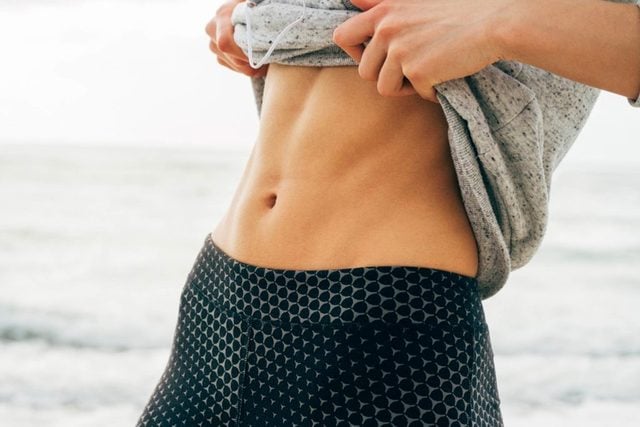
How to Get a Flat Stomach in 10 Minutes
Moms everywhere know the struggle of post-baby bulge, or that extra bit of flab that leaves their bellies wiggly and jiggly. It seems like all of the crunches in the world can’t flatten their stomachs again.
Still, few know the scientific term behind this common complaint. Also called diastasis recti, it occurs during pregnancy as the growing baby pushes the mother’s abdominal muscles apart in the space around her belly button. The lucky moms will watch this spot stretch back on its own, but in others, the gap often stays open after birth. As a result, organs and tissue bulge out of your middle, causing the “mummy tummy.” (Here are 10 things you should never say to a pregnant woman.)
Simply realigning those abdominal muscles will cause the stomach to flatten again, experts say. But to get results fast, there’s one simple, 10-minute exercise for a slimmer waistline—and you won’t even need to leave your home to do it. (You can also try these ways to lose belly fat, according to a Victoria’s Secret model trainer.)
First, sit cross-legged on the floor with your hands on your belly and take a deep breath, letting your stomach fully expand. Then, as you exhale, suck in your belly muscles as far back as you can toward the ground.
With your stomach flattened against your spine, start taking deep breaths and push your stomach back further and further with each exhale. Do so for 10 minutes. (If your squats don’t follow these steps, you’re doing them wrong.)
Done! Until tomorrow, at least. And so far, the exercise has shown incredible results. A small pilot study conducted by developers Leah Keller, a personal trainer, and Dr. Geeta Sharma, an OB-GYN at Weill Cornell Medical Center-New York Presbyterian Hospital, tracked the progress of 63 women with “jelly belly.” After 12 weeks of doing the exercise for 10 minutes per day, all of the women had fixed their diastasis recti. Some even lost a few inches to their waistlines, too.
“We had patients that were even one year out from giving birth, and they still had such great benefit from the exercises,” Sharma says. “We love to see that there is something we can do to help women.”
Although this exercise hasn’t been tested on men or women who haven’t been pregnant, something tells us that it’s definitely worth a shot.
No gym membership? No problem. Here are 15 benefits of walking for just 15 minutes.
Source: NPR

At 71 years old, Kathrine Switzer has run 40 marathons in her life—and she has no intention of stopping anytime soon.
Switzer first came to the public eye in 1967, when she was the first woman to run the Boston Marathon. Back then, she had to use her initials, K.V., instead of her first name to sign up because women weren’t allowed to enter. When people realized what the lipstick-wearing runner had done, a race manager tried physically shoving her off during the run. But she managed to plug on, finishing in four hours and twenty minutes.
To mark the 50-year anniversary of the race, Switzer entered again at age 70. She finished in 4:44:31—not even 25 minutes longer than she’d run the 26.1 miles when she was 20. “Somebody at 70 is running as well as you run at 20, and you say, ‘That’s phenomenal,’ but the body is incredible,” she says. “We’re transforming ourselves.”
Two years before the race, Switzer announced her plan. The science and advice had changed since her first competition, and she wanted help figuring out a training plan. “It was important to me not to get injured during that two-year period or get ill,” she says. “I wasn’t competing, but I didn’t want to be out there for six hours. I had a little pride.”
In her 20s, Switzer would work out twice a day, and run a marathon distance once a week. She says looking back, that was probably too intense, and she cut back for her 2017 Boston run. She ran every other day, doing strength or core training on the opposite days. Spreading the training out more gave her body the chance to recover between workouts. “At 70, 80, 90, the body will always get better if you push it,” Switzer says. “I found the training worked very quickly.” (Your 80-year-old brain will thank you for doing these genius habits.)
As for her diet, Switzer says she doesn’t calorie-count or follow any fads. “I always joke my diet is a see-food diet. If I see food, I eat it,” she says, laughing.
The key is that she isn’t always craving potato chips or chocolate. Working out breaks down muscles, and the toning comes during recovery. Protein helps that process, and Switzer says she’s more drawn to protein-heavy meals. “When you exercise, your body starts craving some good stuff,” she says. “I’m heavier around protein than people would imagine, and I eat a lot of fruits and vegetables.”
The Boston Marathon wasn’t the only thing on Switzer’s bucket list. She also won the New York City Marathon in 1974. Back then the whole race was in Central Park, though, and she’d love to take on the new route, which goes through the city’s five boroughs. “I’ve always wanted to run it in the streets,” she says.
Even though she helped plan the first London Marathon in 1980, she’s never actually ran it—so she’ll do that in 2018.
Switzer isn’t alone in running in her 70s either. She attended the 2017 National Senior Games as Humana’s health and well-being ambassador, and ran the 10K alongside others in the 70-74 age range.
The marathoner says people talk about seniors the way they talked about women 50 years ago, convinced they’re too fragile to be athletes. But the National Senior Games athletes are looking to break down those assumptions. “Seniors have completely changing notions about what capabilities and limits are really about,” she says. “They have the most incredible senses of optimism I have ever seen anywhere. These people are looking forward to getting older.”
To anyone convinced they’re too old to get fit, Switzer says just working up the courage to take that first walk or dip in the pool is the hardest part. If you’re nervous for your first workout, enlist a friend so you can “bumble around together” and feel less self-conscious, she says.
“They make a little progress and have a sense of optimism and do more the next day. That’s what propels you forward,” Switzer says. “The more you do with your body, the better the body will adapt and grow and get stronger.”
Read on to find out how to find the best shoe for you!
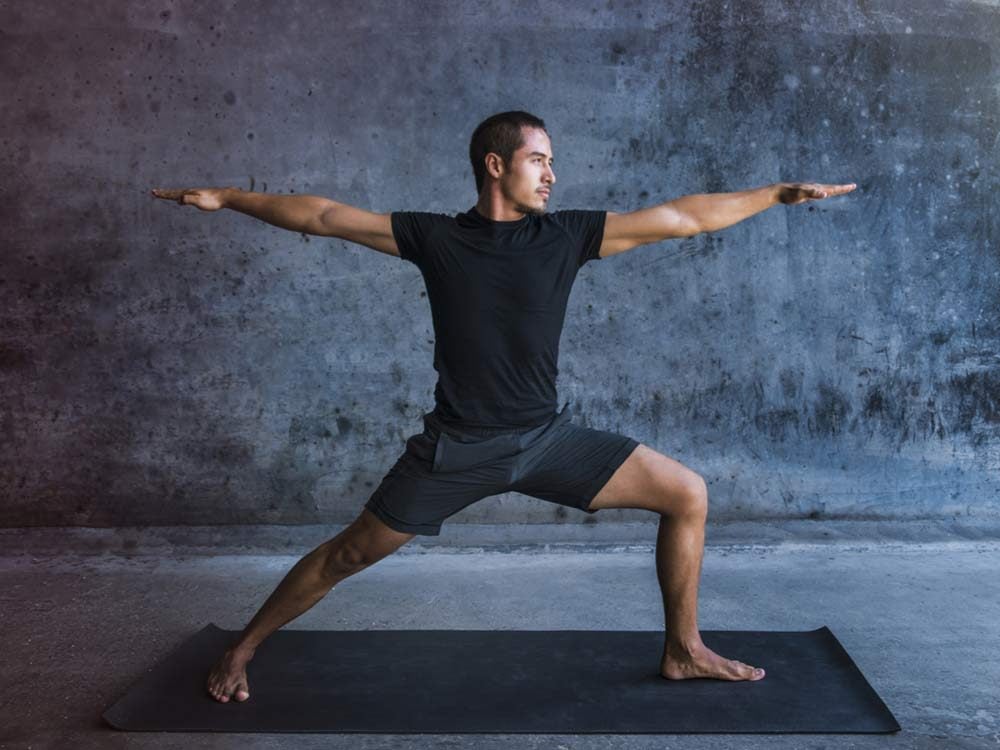
How to Reduce Your Risk of Heart Disease
By now, it’s no secret that regular exercise is key to boosting heart health. But for those looking to seriously reduce their heart disease risk, one workout combo, in particular, can pack double the punch—literally.
Yoga and aerobic exercise are particularly effective at warding off heart disease, according to new research from HG SMS Hospital in India. The team of researchers assigned 750 heart disease patients to three different exercise regimes: aerobic exercise, yoga, or both aerobic exercise and yoga. All three groups participated in three, six-month sessions of their assigned workout.
At the end of the trial period, both the aerobic exercisers and those practicing yoga showed similar reductions in their blood pressure, BMI, and cholesterol. However, the group who had tried both workouts saw twice the improvement, the researchers reported.
That’s not the only perk of yoga; previous research has found that a daily session can boost your brainpower, prevent back pain, and even beat that afternoon slump.
But it’s the combination of the two workouts that does the trick, researchers say. “Combined Indian yoga and aerobic exercise reduce mental, physical and vascular stress and can lead to decreased cardiovascular mortality and morbidity,” co-authors Dr. Sonal Tanwar, a scholar in preventative cardiology, and Dr. Naresh Sen, a consultant cardiologist, both with HG SMS Hospital, wrote. “Heart disease patients could benefit from learning Indian yoga and making it a routine part of daily life.”
Convinced already? Get started by doing these easy yoga poses every day.
[Source: Daily Mail]
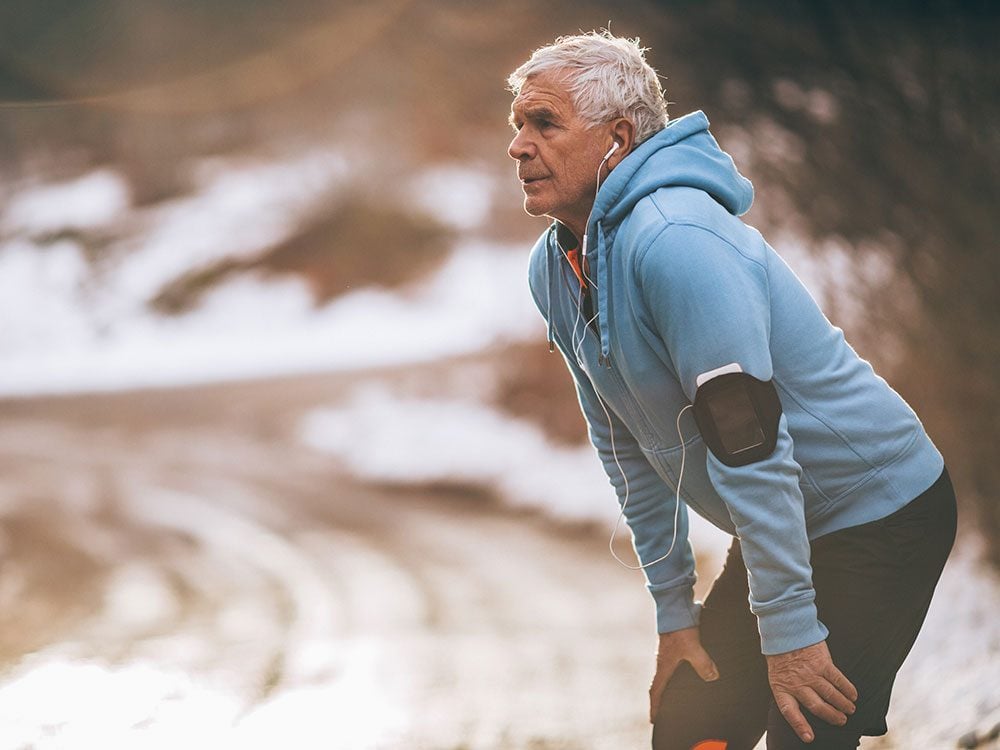
People everywhere are living longer (and stronger) than ever before. And, Canadians are no longer content letting age dictate what we can and cannot do. We want to be proactive about our life and our health. We want to keep active, try new things and stay independent for as long as possible.
While there is no doubt aging is inevitable, how we do it is up to us. At the 2016 Scotiabank Toronto Marathon, Ed Whitlock ran a marathon in three hours, fifty-six minutes and thirty-three seconds, at the age of 85! To put this into perspective, the average finish time for all runners was four hours, twenty-two minutes and twenty-eight seconds.
Although Ed’s story is a remarkable one, we all have the power to conquer our own challenges. To help Canadians do just that, Shoppers Drug Mart has launched Wellwise™, a new resource that makes it easier for Canadians take charge of the way they age.
The first pilot store opened in Toronto in September 2017 and it is already popular with Canadians wanting to stay healthy and active. It offers everything from sleep therapy and physiotherapy products, to supports and braces, as well as mobility products. Wellwise’s expert staff also provides specialized services like professional fitters for compression products, sleep therapy consultations and an on-site dietitian. The goal of Wellwise is to shift the conversation from, “what are the products I need as I get older?” to, “what can I do to take control of the way I age?”
And now, Wellwise is available to all Canadians (outside of Québec) with the launch of wellwise.ca. The website features direct-to-home deliveries and a similar product selection to the store. In addition to one-off purchases, the site will also offer a subscription service to automatically ship frequently used items at regular intervals.
“People are looking at aging differently and through Wellwise we approach aging as something to embrace,” said Theresa Firestone, SVP Healthcare Business at Shoppers Drug Mart. “You can take control and find more ways to be active and enjoy life.”
As we age, there is always the opportunity to reinvent ourselves by making a commitment to living a healthier and active life. That can be as simple as spending more time out with friends, discovering new hobbies and passions, or trying to make exercise a regular part of your week. As we age the focus should be on wellness and aging the way we want.
For more information about Wellwise, or the products and services offered, visit www.wellwise.ca and start taking charge of the way you age.

The Real History Behind IKEA Product Names
You may have thought that IKEA product names were arbitrary choices used to make the furniture seem more Swedish than it is, but there’s actually some reasoning behind them.
For the most part, IKEA adheres to naming things after humans, towns and villages in Scandinavia, as well as various Swedish words, according to the language learning app Babbel. Below is a list of names for some IKEA bookshelves and their meanings:
- Billy – Scandinavian boy’s name
- Hemnes – town in north Norway
- Liatorp – village in south Sweden
- Laiva – Finnish word for “Ship”
- Brimnes – town in south Sweden
- Brusali – place in Norway
- Avdala – town in Sweden
- Galant – Swedish word for “gallant”
- Bestå – Swedish word for “remain” or “consist of”
- Kallax – Swedish locality
The reason the products have strange names at all was by request of the late founder of IKEA, Ingvar Kamprad. Normally, products are just given random numbers and letters as a “name,” but this posed a problem because Kamprad is dyslexic. By choosing real names instead, it was easier to remember them, and harder to make mistakes when filling out the information on forms.
Beyond the practical use, the names have become an important part of going to IKEA too. It makes the whole place feel a tad more European, which appeals to a global market.
Check out the top 10 finds in the IKEA 2018 Catalogue!